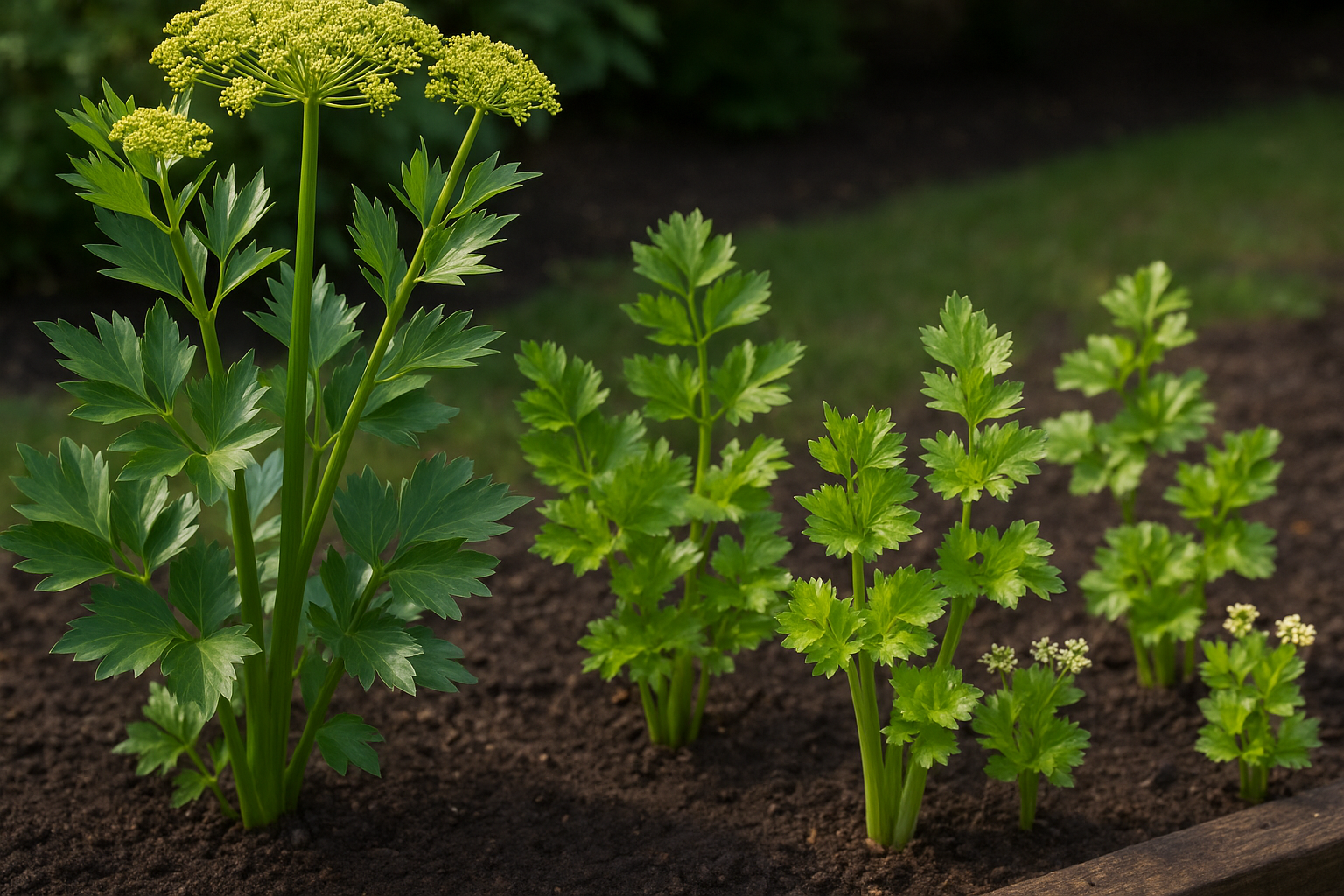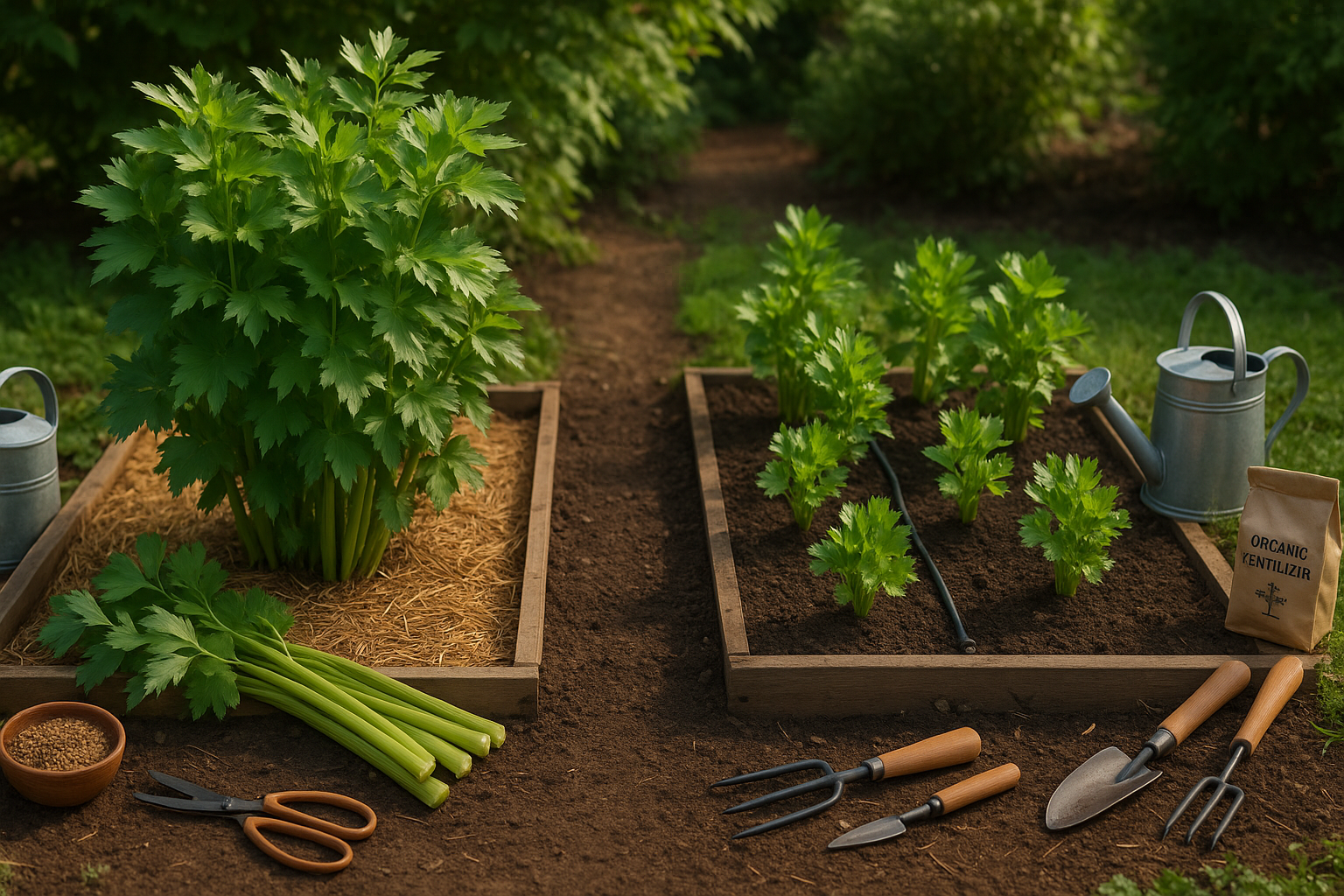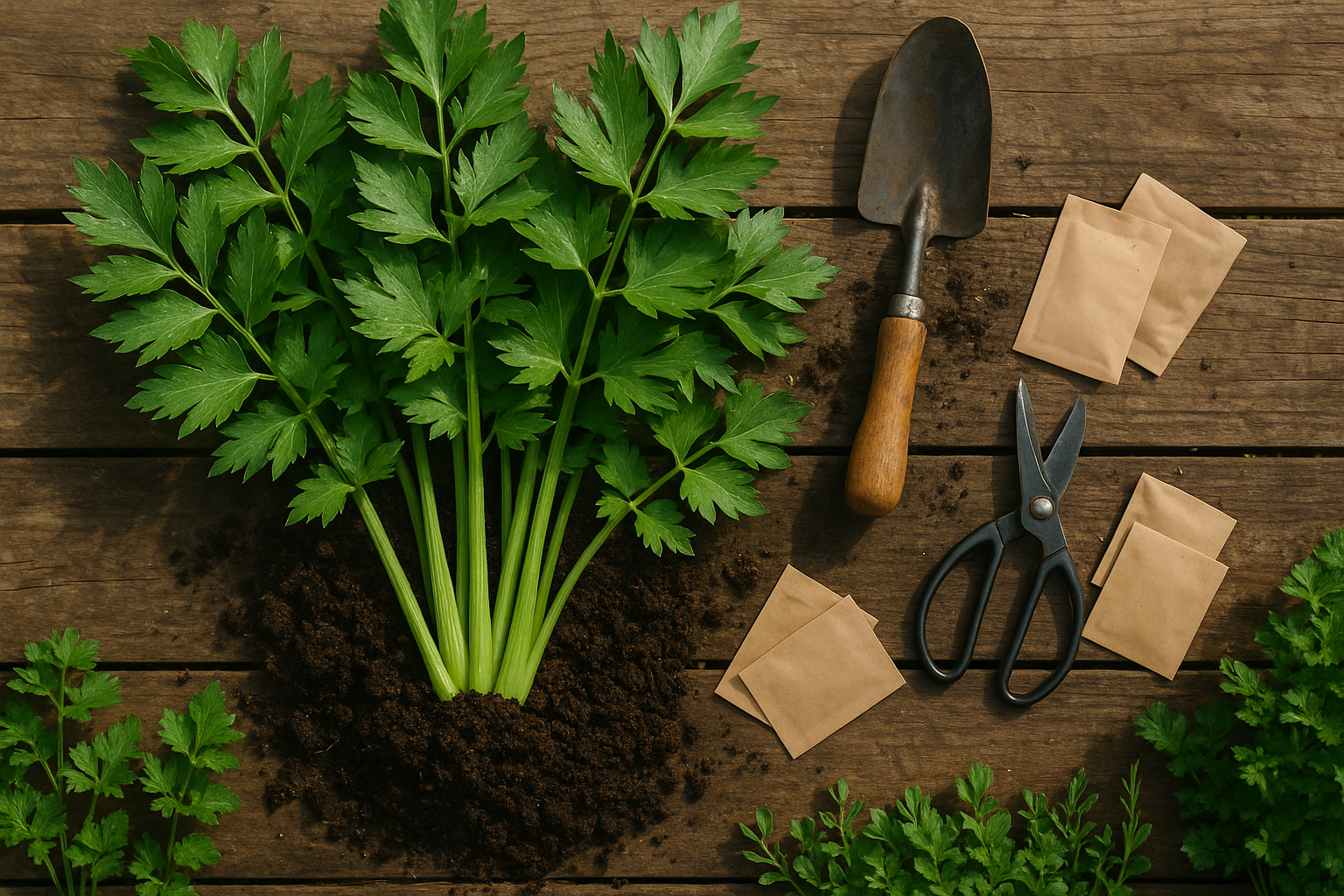Introduction
Lovage vs. celery: you might see these leafy greens and assume they’re interchangeable, but there’s more separating them than meets the eye. Lovage and celery both bring a fresh, herbal kick to dishes, which is why they’re often mixed up in home gardens and kitchens. However, their flavors, uses, and even how you grow or eat them differ in some surprising ways.
In this post, you’ll discover how lovage’s bold, aromatic taste stands apart from celery’s classic crunch, explore their unique roles in recipes, compare which thrives in your garden, and find out how their nutritional benefits stack up.
Origins and Botanical Differences

Lovage (Levisticum officinale) and celery (Apium graveolens) both belong to the Apiaceae family, known for aromatic herbs, yet they differ in origin and appearance. Lovage is native to southern Europe and western Asia, thriving in mountain valleys, while celery comes from Mediterranean marshlands. These native habitats influence their growth preferences: lovage favors cooler climates with moist, well-drained soil, whereas celery needs consistently damp conditions.
Botanically, lovage can grow over 6 feet tall, featuring dark green, glossy, serrated leaves that resemble oversized flat-leaf parsley. Celery, on the other hand, grows up to 2 feet tall and has lighter green, more delicate leaves with tightly packed, crunchy, ribbed stems—its most recognizable trait. By summer, lovage produces umbrella-shaped clusters of yellowish flowers, while celery’s white blossoms are smaller and more understated.
In gardens, lovage stands out as a perennial, regrowing each year and forming robust, bushy clumps, making it perfect for perennial herb beds. Celery is typically a biennial but is often grown as an annual; it requires yearly planting and more attentive care due to its shallow roots. Understanding these distinctions can help gardeners choose the plant that best suits their needs and local conditions.
Flavor Profile and Culinary Uses
Celery and lovage bring distinct personalities to the kitchen, each valuable in its own unique way. Celery is known for its fresh, mild, and crisp flavor that adds a clean crunch to salads, stir-fries, and serves as a base for soups and stews. Both the stalks and leaves are edible, but most recipes—think classic chicken soup or crunchy Waldorf salad—favor the pale green stems for their texture and subtle taste. Celery root (celeriac) and seeds are also used in some cuisines, providing earthiness and a gentle celery essence to dishes like remoulade or coleslaw.
In contrast, lovage packs a punch with its robust, herbal profile—imagine celery amplified with hints of parsley and anise. Its leaves, stems, and seeds are all edible, but the leaves are especially prized for flavoring broths, potato dishes, and tomato sauces, while the seeds work much like celery seeds in breads or pickling. Lovage’s intensity means a little goes a long way, making it a regular star in homemade stocks and hearty vegetable soups where it can shine without overpowering the dish.
Try adding a handful of lovage leaves to a pot of vegetable soup or using chopped stems to season savory scones for a herbal twist. Both plants have their place: choose celery when you want fresh brightness and crunch, and lovage when you crave deeper, more aromatic notes.
Nutrition and Health Benefits
When it comes to nutrition, different foods offer distinct benefits, and comparing them can help you make healthier choices. For example, sweet potatoes are rich in vitamin A, providing over 400% of the daily recommended intake in just one medium tuber, while white potatoes are higher in potassium and vitamin C. Both offer around 100-120 calories per serving, but sweet potatoes edge ahead with more fiber, helping to keep you fuller for longer and supporting digestive health.
Leafy greens like spinach and kale are vitamin powerhouses, delivering significant amounts of vitamin K, vitamin C, iron, and folate with very few calories, making them ideal for those watching their intake.
Unique compounds also set foods apart:
- Sweet potatoes contain beta-carotene, a potent antioxidant linked to eye health.
- Kale’s sulforaphane may help fight inflammation.
Traditionally, these foods have been used for various ailments: sweet potatoes are favored in some cultures to soothe digestive issues, and kale was used in folk remedies for boosting immunity.
Including a colorful variety in your diet ensures you get a broad spectrum of vitamins, fiber, and special compounds, supporting not just basic nutrition but overall wellness, energy, and even long-term disease prevention.
How to Grow

When choosing between lovage and celery for your garden, it’s important to consider their distinct growing needs. Lovage thrives in rich, well-draining soil with plenty of organic matter and prefers a sunny or lightly shaded spot. It tolerates a wide range of temperatures and regrows yearly, making it a hardy, low-maintenance perennial.
Celery, on the other hand, is more particular. It requires consistently moist, fertile soil and full sun, along with cool temperatures—ideally between 55–70°F. It also needs regular feeding and plenty of water, which can make it more challenging for beginners.
Lovage grows vigorously with minimal fuss, while celery is prone to bolting and needs more attention to consistent watering and mulching to keep its roots cool.
When it comes to harvesting, you can snip lovage leaves and stems as needed once the plant is established, encouraging bushier growth by cutting regularly. Celery stems are ready to harvest when they reach full size, and blanching (wrapping the stems with paper or hilling soil) will give them a milder flavor.
For most home gardeners, lovage is a reliable, low-maintenance herb that’s easy to grow and harvest. Celery suits those prepared for a bit more care and patience in pursuit of crisp, flavorful stalks.
Substitution and Storage Tips
Lovage is a fantastic substitute for celery, especially in soups, stocks, and stews, thanks to its similar but more intense flavor—think celery with a hint of parsley and anise. You can swap chopped lovage leaves for celery leaves in salads or use the stems as a flavor base for cooked dishes. Just remember to use less lovage since it’s much stronger; start with about half the amount and adjust to taste.
When replacing lovage with celery, expect a milder result, so you might want to boost the overall seasoning.
For storage, keep fresh lovage stems and leaves wrapped in a damp paper towel inside a plastic bag in the fridge for up to a week. Dried lovage leaves and seeds should be stored in airtight containers, away from light and moisture, to preserve their flavor. Freezing chopped leaves in ice cube trays with water is also a great way to have it handy year-round.
Conclusion
Both basil and Thai basil have distinct flavors and uses, making them special additions to any kitchen or garden. Regular basil offers a sweet, mild taste perfect for Italian dishes, while Thai basil brings a spicy, licorice note ideal for Asian recipes. Each plant thrives with basic care, rewarding gardeners with fresh leaves all season long.
Whether you’re tossing leaves into pasta or using them in a stir-fry, don’t hesitate to try both in your favorite dishes. Exploring their unique qualities can add exciting new flavors to your cooking and bring more variety to your herb garden.
